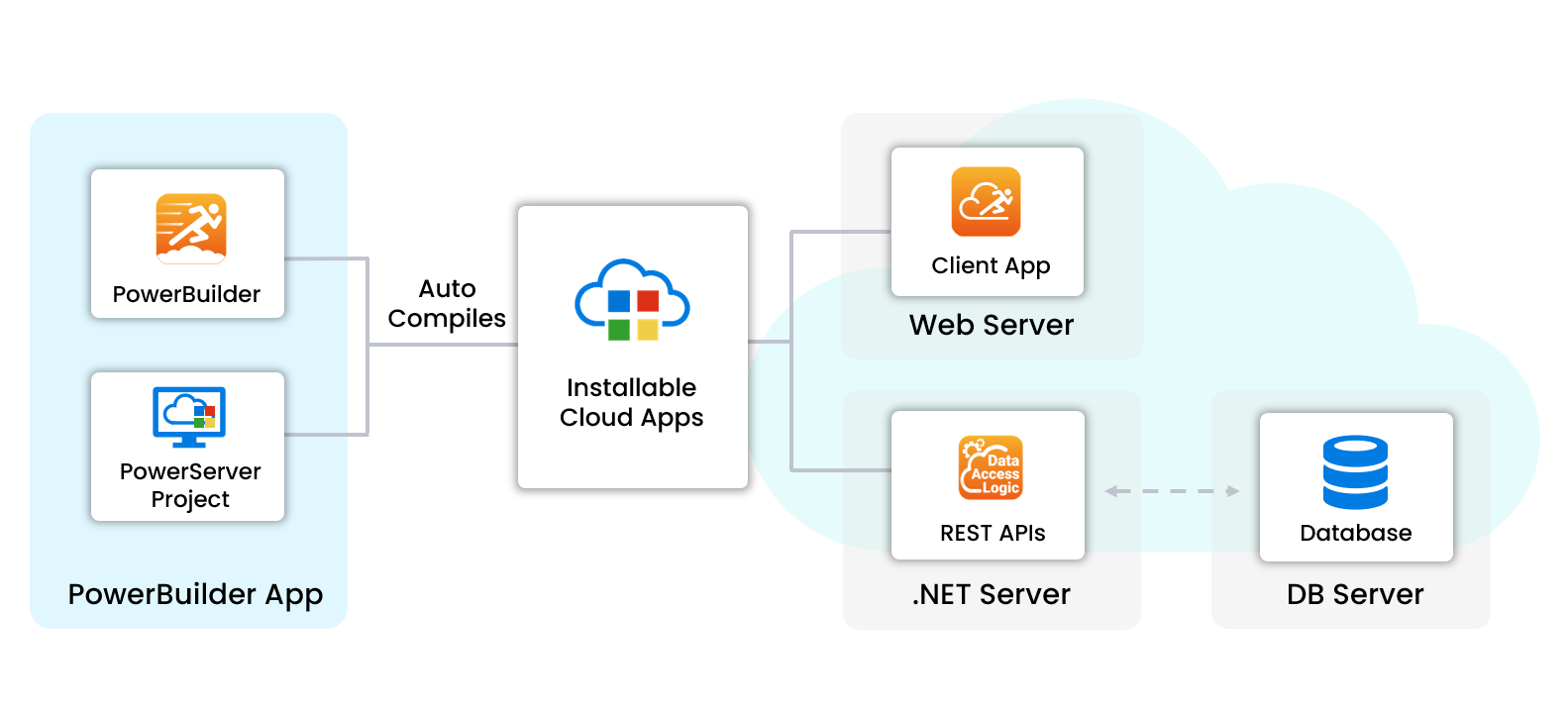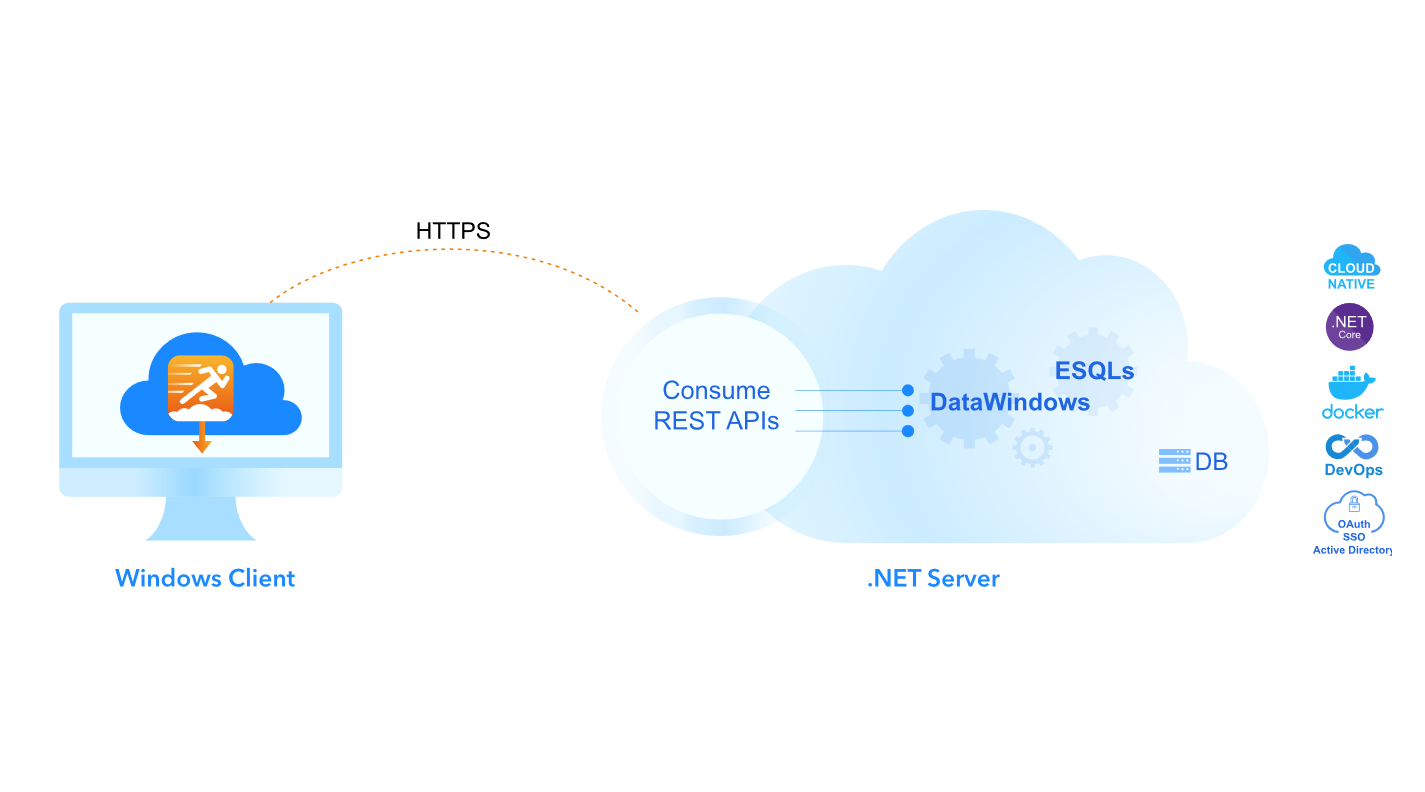PowerServer
Automatically Deploy C/S Apps to the Cloud
The PowerServer project type re-compiles existing client/server projects for Internet access with a cloud-native, .NET architecture. It typically requires minimal code changes and supports almost all existing PowerBuilder features.
Key Benefit of PowerServer
Internet Accessible
End users can access PowerServer apps from Windows devices over the Internet.
Host Anywhere
Host PowerServer apps with cloud providers, private data centers, or even on-premise.
Centralized Deployment
Updates are automatically pushed to users from the server without manual intervention.
No User Retraining
PowerServer apps look and work the same as before, eliminating the need for user training.
Great Scalability
Supports containerized deployment, enabling automatic scaling and cost savings compared to traditional deployments.
Enhanced Security
All SQLs executed on the .NET server behind the firewall. Data consumption is secure via REST APIs using HTTPS and token authentication.
Low-Cost
Converts most PowerBuilder features automatically, usually reducing project migration time to just weeks.
Low-Risk
Developers continue using the PowerBuilder IDE and existing skills, virtually eliminating all project risk.
PowerServer Deployment & Architecture


Cloud-Native Runtime Architecture
End users download the Client App over a secure HTTPS connection and run it on their Windows devices. The application performs all data operations through industry-standard REST APIs in 100% managed .NET code environment. The client app no longer establishes local database connections or executes any SQL on the client device. By separating the UI and data layers, PowerServer achieves a cloud-native architecture that enhances availability, security, and scalability.
Get Started Today
Don't let on-premise infrastructure hold back your business. With PowerServer, you can deploy, secure, and scale your PowerBuilder applications effortlessly.